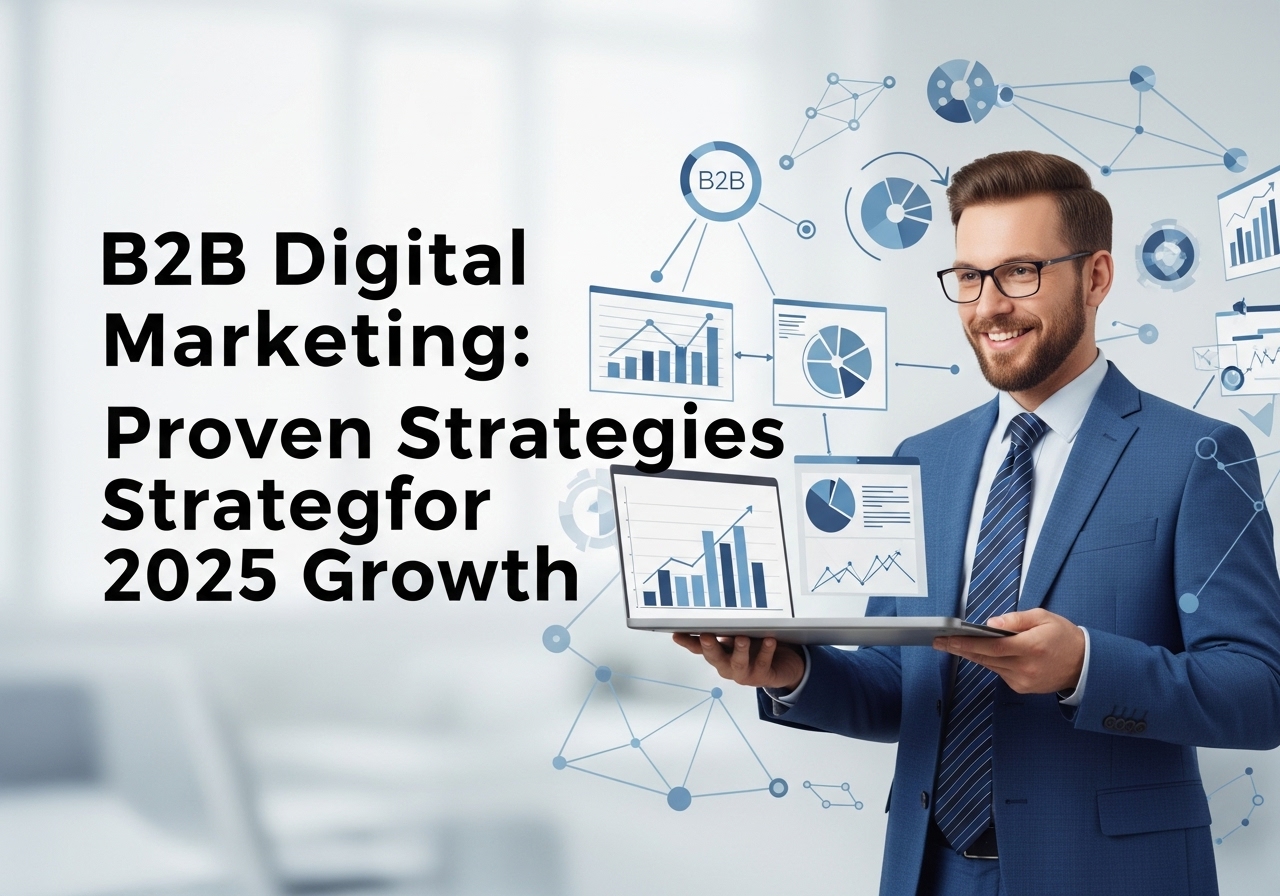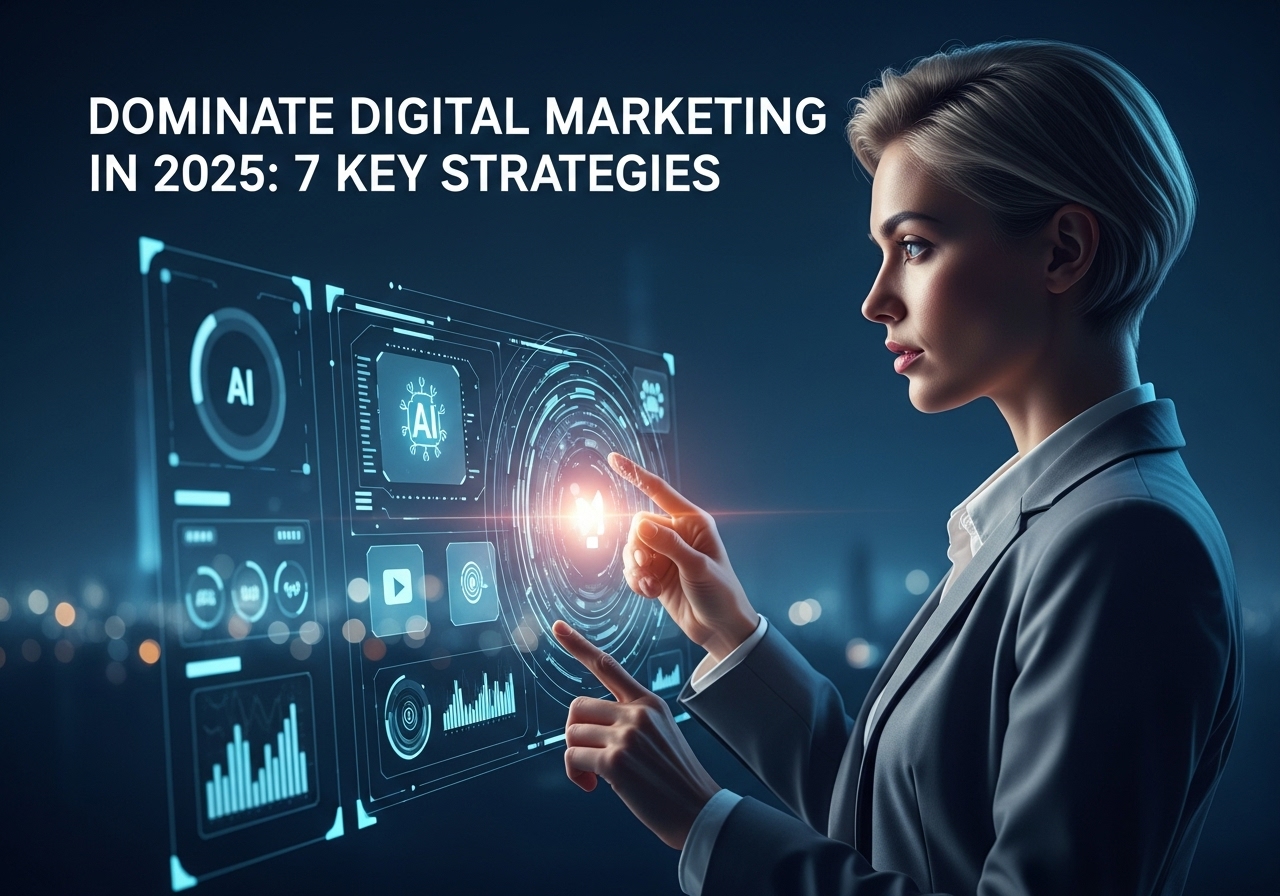Imagine learning that 64% of marketing executives consider data-driven marketing crucial for success today. Indeed, in a world demanding personalized experiences and proven ROI, leveraging data for your digital marketing isn’t just an option—it’s absolutely essential. Consequently, businesses must adapt.
Why Data-Driven Digital Marketing is Crucial Now
The digital marketing landscape has shifted significantly. For instance, with stricter privacy laws, ongoing technological advancements, and changing consumer habits, outdated strategies simply lead to stagnation. Therefore, data-driven marketing empowers businesses to effectively:
- Personalize customer experiences seamlessly at scale.
- Optimize campaigns for significantly higher ROI.
- Make smarter and faster decisions.
- Build customer trust through relevant and valuable content.
Next, let’s explore the defining trends, strategies, and tools for data-driven digital marketing in 2025. Furthermore, we’ll see how you can use them to achieve your growth objectives. You can also explore more insights on our blog.
The Critical Shift: Third-Party to First-Party Data
Due to regulations such as GDPR (for more information, see the official GDPR portal) and the California Consumer Privacy Act, coupled with major browsers phasing out third-party cookies, marketers face reduced access to externally collected data. Consequently, first-party data—information you gather directly from your audience—has become paramount. This includes data from website analytics, CRM systems, email interactions, and purchase histories. Importantly, businesses that effectively own and utilize their first-party data can:
- Gain much deeper insights into their customers.
- Personalize messaging and create tailored offers.
- Significantly drive loyalty and encourage repeat purchases.
Action Step: Therefore, audit your data collection sources. Are you fully maximizing sign-ups, surveys, and engagement opportunities to build a robust first-party data repository?
Navigating Today’s Complex Consumer Journey
Consider this: a single customer journey can now involve between 20 to 500 touchpoints, varying with purchase complexity. Consumers frequently switch between devices, channels, and platforms, yet they consistently expect brands to provide a seamless, unified experience. To manage this, businesses should:
- Map your customer journeys meticulously: Identify every single touchpoint, including social media ads, website visits, and post-purchase emails.
- Use attribution modeling effectively: Understand which channels and campaigns truly drive results, allowing for more effective budget allocation.
Action Step: Subsequently, implement advanced analytics tools. These tools are crucial for tracking and connecting these diverse touchpoints, thereby achieving a comprehensive 360-degree customer view.
AI and Automation: Your New Marketing Superpowers
An astonishing 93% of marketers are investing in AI this year. The reason is clear: AI and automation tools have transitioned from being merely beneficial to absolutely essential for tasks such as:
- Creating hyper-personalized content.
- Optimizing campaigns in real-time.
- Utilizing predictive analytics to forecast trends and behaviors.
Generative AI, specifically, is empowering brands to deliver content that deeply resonates on an individual level. As a result, engagement and conversion rates are soaring. Improving your overall marketing strategy with these tools is key.
Action Step: Therefore, explore AI-driven platforms. Focus on those offering personalized recommendations, intelligent chatbots, and predictive lead scoring capabilities.
Personalization: The Ultimate Revenue Multiplier
Personalization is far more than a mere buzzword; it’s a significant growth driver. Indeed, brands that leverage data to tailor experiences consistently outperform their competitors. Their customers, in turn, buy more frequently and exhibit greater loyalty. Key strategies include:
- Segmenting your audience based on behavior, interests, and purchase history.
- Delivering dynamic website content, personalized emails, and precisely targeted ads.
For example: An e-commerce retailer might use AI to analyze past purchases and browsing data. Consequently, targeted product recommendations in emails can boost click-through rates by 30% and sales by an impressive 20%.
Privacy and Trust: Today’s New Currency
Consumers today are more informed than ever about how their data is utilized. Therefore, winning their trust necessitates transparency, robust security, and respectful data handling. To achieve this, you must:
- Clearly communicate your data policies.
- Provide users with meaningful control over their data.
- Utilize zero-party data (information intentionally shared by customers, such as preferences and survey responses) to enhance personalization without compromising privacy.
Action Step: Consequently, regularly review your privacy practices. Moreover, update your communications to clearly highlight your unwavering commitment to customer data protection.
Predictive Analytics: Marketing with True Foresight
Advanced analytics tools now empower marketers to predict future behaviors, rather than merely analyzing past events. By effectively leveraging predictive models, your business can:
- Anticipate customer needs proactively.
- Optimize the timing and content of your messaging.
- Proactively work to reduce customer churn.
Action Step: Therefore, invest in sophisticated dashboards and analytics platforms. Specifically, choose those that offer robust predictive capabilities to maintain a competitive edge.
Case Study: Data-Driven Success in Action
Brand: A mid-sized SaaS company.
Challenge: Experiencing stagnant growth alongside declining campaign ROI.
Solution Implemented:
- Firstly, they consolidated all first-party data from CRM, website, and email marketing systems.
- Secondly, they deployed AI tools for advanced segmentation and personalized content delivery.
- Lastly, they used multi-touch attribution models to accurately identify top-performing channels.
Remarkable Results Achieved:
- A 40% increase in lead-to-customer conversion rate.
- A 25% reduction in cost per acquisition.
- A 2X increase in email campaign engagement.
Quick Wins: Actionable Data-Driven Strategies for 2025
To immediately enhance your efforts, consider these actionable strategies:
- Audit your data sources: First and foremost, ensure you’re collecting maximum quality first-party and zero-party data.
- Map and optimize the customer journey: Subsequently, unify online and offline touchpoints to create a truly seamless experience.
- Leverage AI and automation: Additionally, use these tools to personalize, predict, and optimize, which saves time and boosts ROI.
- Prioritize privacy: Furthermore, make transparency and robust security a key competitive differentiator for your brand.
- Test, measure, and iterate continuously: Finally, use data to drive ongoing improvement, rather than focusing on isolated campaigns.
Key Data-Driven Marketing Trends to Watch in 2025
Looking ahead, several trends will shape the data-driven marketing landscape. Therefore, keep an eye on these developments:
- Omnichannel personalization will become increasingly crucial. This is because consumers expect cohesive and consistent experiences across every device and platform.
- Generative AI continues to revolutionize content and creative processes. Consequently, it enables brands to scale personalization efforts like never before.
- Advanced attribution models will gain prominence. These models help marketers pinpoint the true drivers of ROI within complex customer journeys.
- Platform convergence is accelerating. As the lines between social media, search engines, and e-commerce blur, integrated, data-powered strategies become essential.
Ready to Supercharge Your Marketing Efforts?
Data-driven digital marketing is not merely a fleeting trend; rather, it’s the fundamental basis for sustainable growth in 2025 and well beyond. The brands achieving success today are precisely those that effectively harness data, personalize experiences at scale, and consistently build trust at every single touchpoint.
So, are you curious where your current marketing strategy stands?
Finally, don’t let outdated tactics or mere guesswork hold your business back. Take the decisive next step towards mastering data-driven marketing. Indeed, unlock your company’s next significant stage of growth starting today!



